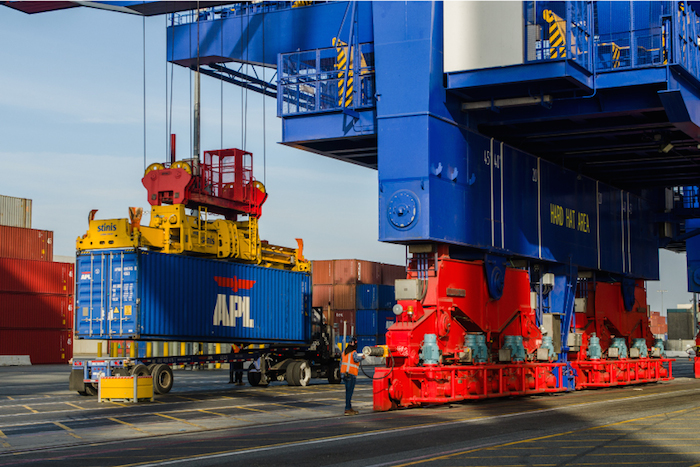
Container being lowered onto a chassis at APM Terminal. The JOC reports that ‘some terminals have reported that dwell times of 10 days are taking place, compared to the normal three days. One carrier said it had containers sitting on the dock for 20 days waiting for on-dock rail. The increased dwell time simply aggravates the congestion problems.’
Chassis shortages, huge cargo discharges from big ships and a labor force that is stretched to the limit are contributing to a congestion problem that Los Angeles-Long Beach can’t seem to shake. But chassis seem to be the main culprit.
“The consensus is that chassis are the most immediate concern,” said Alex Cherin, executive director of the Harbor Trucking Association.
“If the chassis model were fixed, we’d all be having a better day,” said Bruce Wargo, CEO of PierPass Inc., the entity that represents the13 container terminal operators in Los Angeles-Long Beach.
The largest U.S. port complex, and other major container gateways, have been struggling all year with congested marine terminals, long truck lines, equipment shortages and dislocations and strong imports due to the recovering U.S. economy. At many ports, container volumes are at or above the pre-recession peak years of 2006-07.
The extra demand on longshore labor has emerged as a real problem in Los Angeles-Long Beach. Terminals throughout the summer have been forced to increase their use of part-time longshoremen, known as casuals, who generally are not as productive as their veteran counterparts. On some nights, terminals exhaust their entire roster of registered and casual labor, and still can’t fill of the labor slots needed for that work shift, Wargo said.
As a result, container dwell times have risen dramatically. Some terminals have reported that dwell times of 10 days are taking place, compared to the normal three days. One carrier said it had containers sitting on the dock for 20 days waiting for on-dock rail. The increased dwell time simply aggravates the congestion problems.
